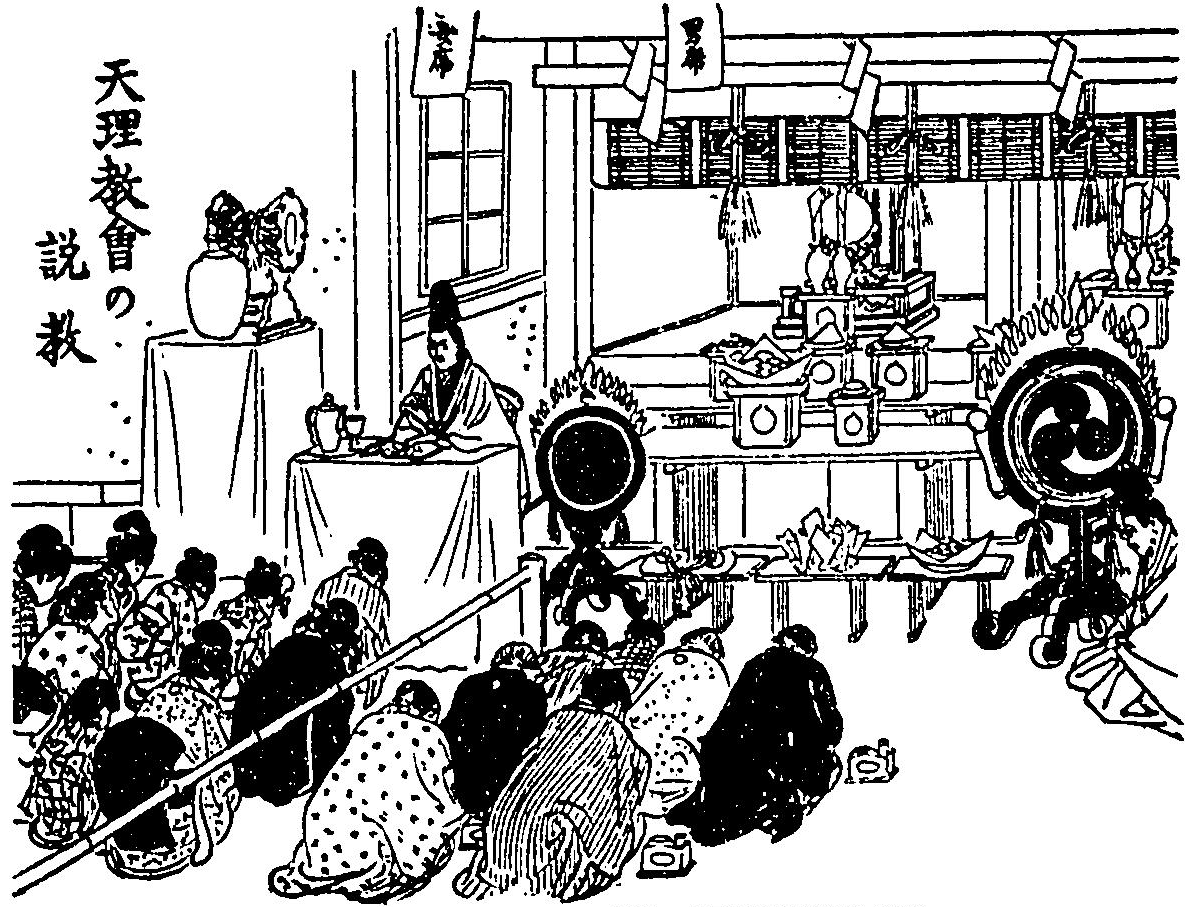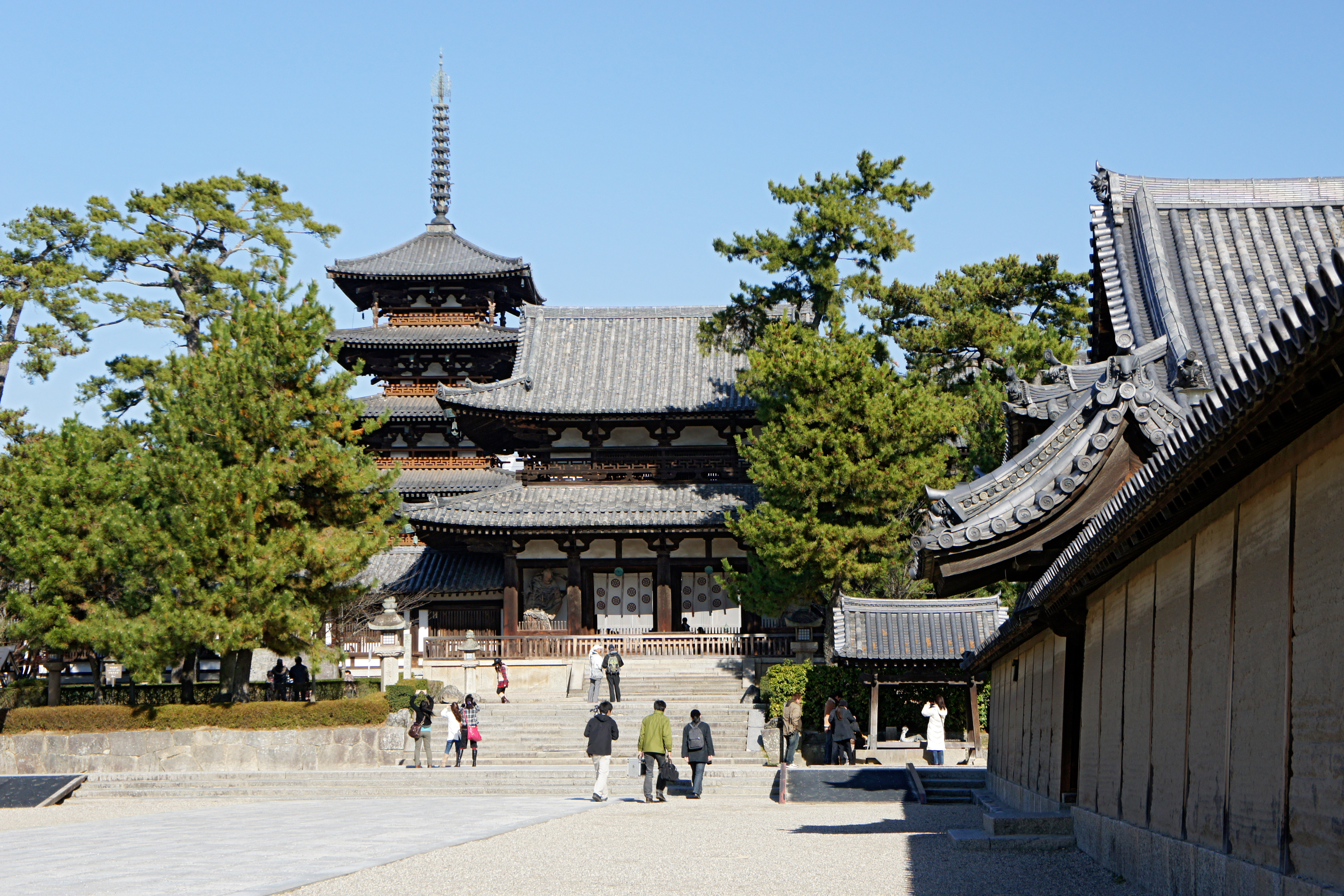|
Tenri Line
The is a railway line of Kintetsu Railway in Nara Prefecture, Japan connecting Hirahata Station in Yamato-Kōriyama and Tenri Station in Tenri. The line has four stations including the terminal Tenri and the transfer station Hirahata. It is mainly used by commuters in the morning and evening, as well as by followers of Tenrikyo, headquartered in Tenri, especially during festivals of the religion. Route data * Gauge: * Length: * Interlocking system: Electronic Interlocking History The Tenri Light Railway Co. opened a gauge line from its namesake town to Horyuji on the Kansai Main Line The is a railway line in Japan, which connects Nagoya Station with JR Namba Station in Osaka. It is jointly run by the Central Japan Railway Company (JR Central) and West Japan Railway Company (JR West), with the boundary between both compan ... in 1915. The Osaka Electric Railway Co. acquired the line in 1921, the year it opened the Kashihara Line, which connected at Hirahata. The ... [...More Info...] [...Related Items...] OR: [Wikipedia] [Google] [Baidu] |
Commuter Rail
Commuter rail or suburban rail is a Passenger train, passenger rail service that primarily operates within a metropolitan area, connecting Commuting, commuters to a Central business district, central city from adjacent suburbs or commuter towns. Commuter rail systems can use locomotive-hauled trains or multiple units, using electric or diesel propulsion. Distance charges or zone pricing may be used. The term can refer to systems with a wide variety of different features and service frequencies, but is often used in contrast to rapid transit or light rail. Some services share similarities with both commuter rail and high-frequency rapid transit; examples include German S-Bahn in some cities, the Réseau Express Régional (RER) in Paris, the Milan S Lines, S Lines in Milan, many Japanese commuter systems, the East Rail line in Hong Kong, and some Australasian suburban networks, such as Sydney Trains. Many commuter rail systems share tracks with other passenger services and Cargo ... [...More Info...] [...Related Items...] OR: [Wikipedia] [Google] [Baidu] |
Tenrikyo
is a Japanese new religion which is neither strictly monotheistic nor pantheistic, originating from the teachings of a 19th-century woman named Nakayama Miki, known to her followers as "Oyasama". Followers of Tenrikyo believe that God of Origin, God in Truth, known by several names including "Tsukihi," " Tenri-Ō-no-Mikoto" and "Oyagamisama" revealed divine intent through Miki Nakayama as the Shrine of God and to a lesser extent the roles of the Honseki Izo Iburi and other leaders. Tenrikyo's worldly aim is to teach and promote the Joyous Life, which is cultivated through acts of charity and mindfulness called . The primary operations of Tenrikyo today are located at Tenrikyo Church Headquarters, which supports 16,833 locally managed churches in Japan,Japanese Ministry of Education. ''Shuukyou Nenkan, Heisei 14-nen'' (宗教年鑑平成14年). 2002. the construction and maintenance of the and various community-focused organisations. It has 1.75 million followers in Japan a ... [...More Info...] [...Related Items...] OR: [Wikipedia] [Google] [Baidu] |
Rail Transport In Nara Prefecture
Rail or rails may refer to: Rail transport *Rail transport and related matters *Railway track or railway lines, the running surface of a railway Arts and media Film * ''Rails'' (film), a 1929 Italian film by Mario Camerini * ''Rail'' (1967 film), a film by Geoffrey Jones for British Transport Films * ''Rail'' (2024 film), a Tamil-language film Magazines * ''Rail'' (magazine), a British rail transport periodical * ''Rails'' (magazine), a former New Zealand based rail transport periodical Other arts *The Rails, a British folk-rock band * Rail (theater) or batten, a pipe from which lighting, scenery, or curtains are hung Technology *Rails framework or Ruby on Rails, a web application framework *Rail system (firearms), a mounting system for firearm attachments *Front engine dragster *Runway alignment indicator lights, a configuration of an approach lighting system *Rule Augmented Interconnect Layout, a specification for expressing guidelines for printed circuit boards; companion ... [...More Info...] [...Related Items...] OR: [Wikipedia] [Google] [Baidu] |
Kashihara Line
The is a north-south bound railway line in Nara Prefecture, Japan, owned and operated by the Kintetsu Railway, a private railway operator. It connects Yamato-Saidaiji Station and Kashiharajingu-mae Station. Service outline Most Express and Limited Express trains operate to and from the Kyoto Line, and some Express services operate between Kyoto and Tenri via the line between Saidaiji and Hirahata stations. Stations *Local trains stop at every station. History The first section of the line, from Saidaiji Station (present-day ) to Kōriyama Station (present-day ), opened on 1 April 1921. The line was extended to on 1 April 1922, and the section from Hirahata to opened on 21 March 1923. See also * List of railway lines in Japan List of railway lines in Japan lists existing Rail transport, railway lines in Japan alphabetically. The vast majority of Japanese railways are classified under two Japanese laws, one for and another for . The difference between the two is ... [...More Info...] [...Related Items...] OR: [Wikipedia] [Google] [Baidu] |
Kansai Main Line
The is a railway line in Japan, which connects Nagoya Station with JR Namba Station in Osaka. It is jointly run by the Central Japan Railway Company (JR Central) and West Japan Railway Company (JR West), with the boundary between both companies being located at Kameyama Station (Mie), Kameyama Station in Kameyama, Mie. The section from Kamo Station (Kyoto), Kamo Station west to JR Namba Station is electrified and a part of the JR West "Urban Network", and is nicknamed the Yamatoji Line. The JR Central section from Nagoya to Kameyama is also electrified. Despite its name, for much of its length it is a very local line with mainly single track sections and no regular express services. The line was originally built in the 1890s by Kansai Railway (later under the Japanese Government Railways and Japanese National Railways) as an alternate route from south Osaka to Nara and Nagoya, but competition from the Kintetsu Railway, Kintetsu lines and declining ridership forced the line t ... [...More Info...] [...Related Items...] OR: [Wikipedia] [Google] [Baidu] |
Interlocking
In railway signalling, an interlocking is an arrangement of signal apparatus that prevents conflicting movements through an arrangement of tracks such as junctions or crossings. In North America, a set of signalling appliances and tracks interlocked together are sometimes collectively referred to as an ''interlocking plant'' or just as an ''interlocking''. An interlocking system is designed so that it is impossible to display a signal to proceed unless the route to be used is proven safe. Interlocking is a safety measure designed to prevent signals and points/switches from being changed in an improper sequence. For example, interlocking would prevent a signal from being changed to indicate a diverging route, unless the corresponding points/switches had been changed first. In North America, the official railroad definition of interlocking is: "''An arrangement of signals and signal appliances so interconnected that their movements must succeed each other in proper sequence''". ... [...More Info...] [...Related Items...] OR: [Wikipedia] [Google] [Baidu] |
Rail Gauge
In rail transport, track gauge is the distance between the two rails of a railway track. All vehicles on a rail network must have wheelsets that are compatible with the track gauge. Since many different track gauges exist worldwide, gauge differences often present a barrier to wider operation on railway networks. The term derives from the metal bar, or gauge, that is used to ensure the distance between the rails is correct. Railways also deploy two other gauges to ensure compliance with a required standard. A ''loading gauge'' is a two-dimensional profile that encompasses a cross-section of the track, a rail vehicle and a maximum-sized load: all rail vehicles and their loads must be contained in the corresponding envelope. A '' structure gauge'' specifies the outline into which structures (bridges, platforms, lineside equipment etc.) must not encroach. Uses of the term The most common use of the term "track gauge" refers to the transverse distance between the inside surfaces ... [...More Info...] [...Related Items...] OR: [Wikipedia] [Google] [Baidu] |
Tenri, Nara
280px, Tenri City Hall is a city located in Nara Prefecture, Japan. , the city had an estimated population of 60,890 in 29456 households, and a population density of 700 persons per km2. The total area of the city is . The city is named after the Japanese new religion Tenrikyo, which has its headquarters in the city. Geography Tenri is located in the north-central part of Nara Prefecture. Neighboring municipalities Nara Prefecture * Nara * Sakurai * Yamatokōriyama * Tawaramoto * Miyake * Kawanishi Climate Tenri has a humid subtropical climate (Köppen ''Cfa'') characterized by warm summers and cool winters with light to no snowfall. The average annual temperature in Tenri is 13.4 °C. The average annual rainfall is 1636 mm with September as the wettest month. The temperatures are highest on average in August, at around 25.4 °C, and lowest in January, at around 1.9 °C. Demographics Per Japanese census data, the population of Tenri is as shown bel ... [...More Info...] [...Related Items...] OR: [Wikipedia] [Google] [Baidu] |
Nara Prefecture
is a Prefectures of Japan, prefecture of Japan located in the Kansai region of Honshu. Nara Prefecture has a population of 1,321,805 and has a geographic area of . Nara Prefecture borders Kyoto Prefecture to the north, Osaka Prefecture to the northwest, Wakayama Prefecture to the southwest, and Mie Prefecture to the east. Nara (city), Nara is the capital and largest city of Nara Prefecture, with other major cities including Kashihara, Nara, Kashihara, Ikoma, Nara, Ikoma, and Yamatokōriyama. Nara Prefecture is located in the center of the Kii Peninsula on Japan's Pacific Ocean coast, and is one of only eight landlocked prefectures. Nara Prefecture has the distinction of having more UNESCO World Heritage listings than any other prefecture in Japan. History The Nara Prefecture region is considered one of the oldest regions in Japan, having been in existence for thousands of years, and is widely viewed as the Japanese cradle of civilization. Like Kyoto, Nara was one of Imperial ... [...More Info...] [...Related Items...] OR: [Wikipedia] [Google] [Baidu] |



